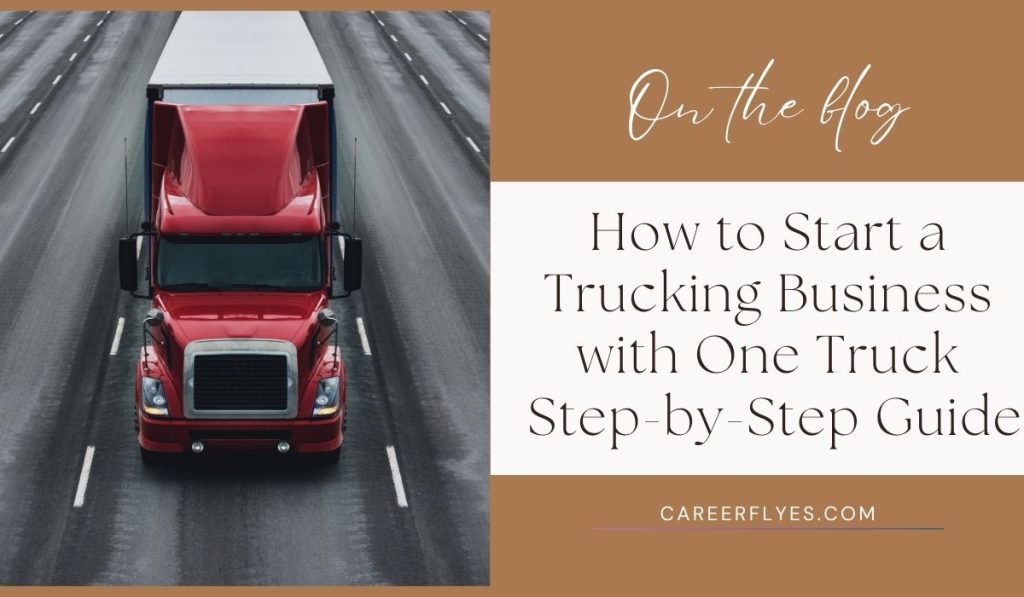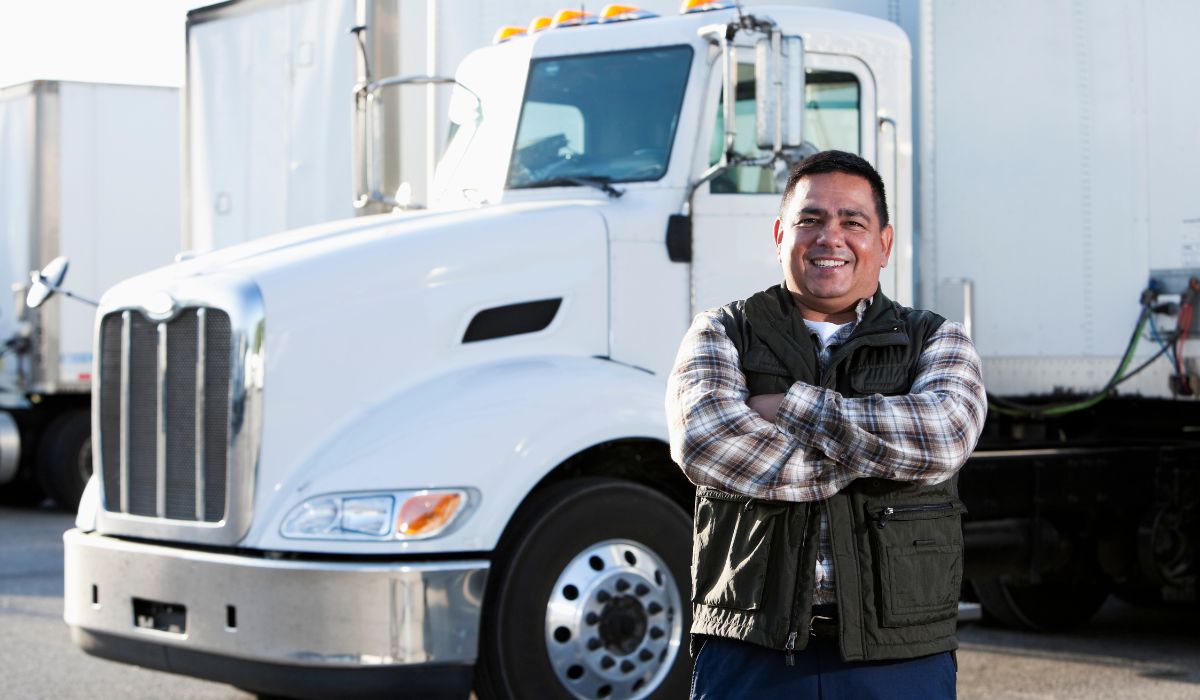How to Start a Trucking Business with One Truck: Step-by-Step Guide
4 min read
Starting a trucking business with just one truck can be a rewarding venture. Running a single-truck operation allows you to keep costs manageable, maintain flexibility, and grow at your own pace. This guide will walk you through the steps you need to take to get your trucking business on the road, covering everything from planning to compliance and day-to-day management.
How to Start a Trucking Business with One Truck
Step 1: Creating a Business Plan

Your business plan is your roadmap. It defines your business objectives, target market, and services you plan to offer. Outline your financial projections, including startup costs like truck financing and insurance, as well as ongoing expenses like fuel costs and maintenance.
Tips:
- Consider services you’ll provide, like local deliveries or long-haul routes.
- Include details on operating costs, pricing strategy, market rates, and profit margins.
A solid business plan also helps when seeking business credit or loans from banks or investors.
Step 2: Choosing a Business Structure
Choosing the right business structure impacts taxes and liability. Common options include:
- Sole Proprietorship: Simple and affordable but offers no personal liability protection.
- Limited Liability Company (LLC): Provides liability protection and flexibility in taxes.
- Corporation: Suitable for long-term growth but comes with more regulatory requirements.
After choosing a structure, you’ll need to register with your state and possibly at the local level.
Step 3: Registering Your Business and Getting an EIN
Register your business with state authorities, and apply for an Employer Identification Number (EIN) from the IRS. The EIN is necessary for tax filings and helps separate your personal and business finances. Registering ensures your business is legally recognized, helping you gain credibility and access to business bank accounts.
Step 4: Obtaining Licensing and Permits

To operate legally, you’ll need specific licenses and permits:
- Commercial Driver’s License (CDL): Required for operating commercial vehicles.
- USDOT Number: Required by the Department of Transportation for interstate operations.
- Operating Authority (MC Number): Needed to transport goods across state lines.
Be sure to follow FMCSA (Federal Motor Carrier Safety Administration) guidelines and DOT compliance requirements, including Hours of Service (HOS) regulations, to keep your business running smoothly.
Step 5: Securing Insurance
Adequate insurance is crucial in the trucking business to protect yourself and your assets. Common policies include:
- Liability Insurance: Covers damages caused to others.
- Cargo Insurance: Protects the goods you transport.
- Physical Damage Insurance: Covers repairs or replacement for your truck.
Consider additional coverages like freight insurance and fleet insurance if you plan to expand.
Step 6: Buying or Leasing Your Truck
Decide whether to buy or lease your first truck based on your financial situation. New trucks offer reliability but are more expensive. Used trucks are more affordable but may require more maintenance.
When purchasing, consider financing options available through banks or specialized lenders. Leasing may be an option if you want lower upfront costs.
Step 7: Setting Up a Maintenance Plan

To keep your truck running efficiently, set up a maintenance plan. Regular vehicle inspections and preventive maintenance reduce unexpected breakdowns and costly repairs.
Key Aspects:
- Routine Inspections: Check brakes, tires, and engine.
- Maintenance Records: Keep detailed records for compliance and resale value.
- Roadside Assistance: Consider a roadside assistance plan for emergencies.
Good maintenance practices can extend vehicle depreciation and improve fuel efficiency.
Step 8: Managing Operating Costs and Setting Rates
- Fuel Costs: A major expense that varies based on fuel prices and trip length.
- Insurance Premiums: Regular payments for coverage.
- Maintenance: Costs for routine upkeep and repairs.
Determine your cost per mile and set competitive rates. Consider using a fuel card program to save on fuel costs and streamline expenses.
Step 9: Finding Clients and Securing Freight
To keep your truck moving, secure clients and freight through multiple channels:
- Load Boards: Online platforms that connect drivers with available loads.
- Freight Brokers: Help find loads, especially when starting out.
- Dispatcher Services: Third-party services that assist in finding and booking loads.
Building relationships and offering good customer service will encourage clients to work with you repeatedly.
Step 10: Marketing Your Trucking Business

Promoting your business helps attract clients and increase visibility.
Strategies:
- Social Media Presence: Share updates on routes, services, and testimonials.
- Website: A professional website adds credibility and provides contact information.
- Networking Events: Attend industry events and join trucking associations.
Encourage referrals from satisfied clients to help grow your business organically.
Step 11: Managing Compliance and Record Keeping
Staying compliant with regulations keeps your business on the right track. Key areas to manage include:
- Electronic Logging Device (ELD): Tracks driving time for HOS compliance.
- Record Keeping: Maintain records for maintenance, income, and expenses.
- Tax Filings: Stay up-to-date with income tax and quarterly tax filing requirements.
Adhering to safety regulations and conducting vehicle licensing audits can help prevent penalties.
Step 12: Financial Management and Cash Flow
Effective financial management keeps your business profitable. Implement systems for invoicing, cash flow management, and revenue tracking. Be proactive with expense tracking to understand your business’s financial health and make informed decisions.
Step 13: Planning for Growth and Expansion
If your one-truck operation is successful, consider expanding by adding more trucks or services. Look into business expansion strategies like:
- Fleet Management: Managing additional trucks effectively.
- Small Fleet Management: Scaling up to a manageable small fleet.
- Service Contracts: Establishing consistent revenue streams with regular clients.
Plan your growth carefully to avoid overextending resources.
Conclusion
Starting a trucking business with one truck is an achievable and profitable goal with the right approach. From creating a business plan to securing freight and managing finances, each step helps lay the foundation for success. With proper maintenance, effective marketing, and consistent client service, you can establish a thriving trucking business.
Did this guide help you? Comment below with any questions, or subscribe for more articles on building a successful trucking business!






